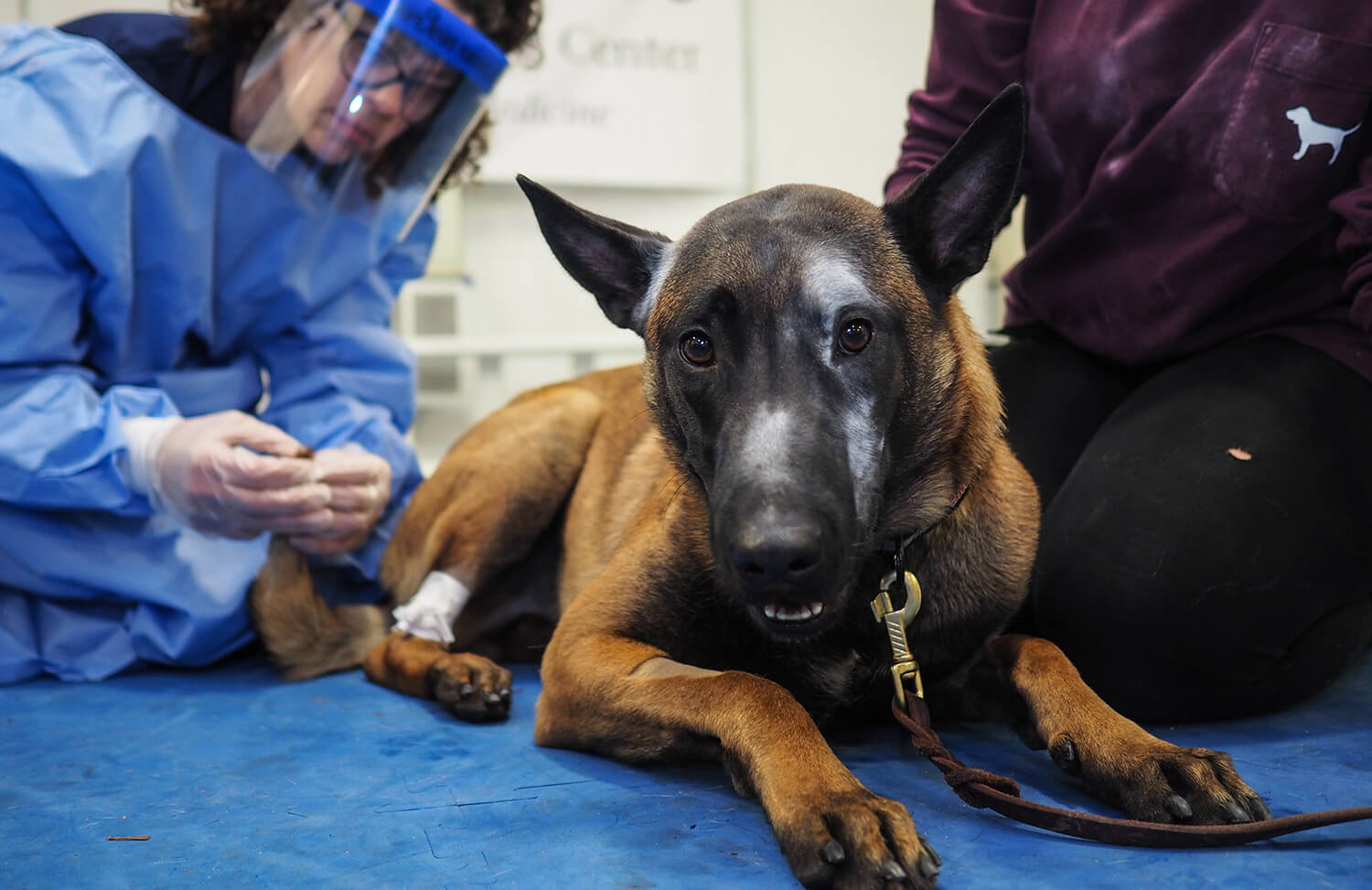Q: Working dogs are being used to help combat the problem with opioid drugs, yet seemingly they are becoming part of the story. Tell us what you’re seeing.
A: The really big issue is that fentanyl, which is one of the drugs that’s lacing the heroin, can be absorbed across mucus membranes. When dogs are out there sniffing, if they get into a pile of powder, fentanyl can be absorbed across their mucous membranes in their nose, and they can face a life-threatening overdose. We want to help people to understand what that looks like, how are we going to treat that, and what the risks are that handlers and other people may face.
Q: What are you working on at Penn Vet now to investigate these issues and determine how we can mitigate the problems moving forward?
A: We’re really focused on the police canines that are at the highest risk of being exposed. With support from the Department of Homeland Security and the Department of Defense, we have been conducting a study to determine what happens when these dogs are exposed to fentanyl.
First of all, I have to explain the fentanyl is a drug that we use in normal clinical practice for anesthesia all the time. We know about fentanyl in dogs when it’s given intravenously. We don’t know exactly what might happen when they inhale a bunch of it. But when we did our study, we gave it intravenously so it could be safe, just like we’re doing in the hospital setting. We wanted to ask, how can we reverse an overdose? What does an overdose look like in terms of their behavior? Do they just kind of go to sleep or do they have different effects that the handler could recognize?
Q: How similar are dogs’ opioid receptors to that of human beings?
A: They have the same opioid receptors, but what most people don’t realize is that dogs are not as sensitive to opioids as humans are. When we provide an opioid for a dog to create anesthesia, it takes about 20 times the dose. If the dog is showing some signs of opioid intoxication, that means that was a really big dose—which means that there’s probably a lot of that available to affect people as well.
Q: Naloxone is used to reverse overdoses with humans, correct? Could that be used with dogs and other pets as well?
A: Absolutely. That was our big question. In the hospital setting we use Naloxone all the time, but we give it in the muscle as an injection. We didn’t know if using the intranasal Naloxone, which is what a lot of first responders have available, would be safe and effective in the dog. We needed to understand if the dose was appropriate. Our study compared the intramuscular injection versus the intranasal spray.
Q: What did you find? How fast is the recovery time for these animals after they receive a dose of Naloxone?
A: It’s great. Both an injection or an intranasal spray gives a response in about a minute.
Q: Wow, that's quick.
A: By five minutes, they’re totally back to normal. Now the thing we don’t know is if the dog got a really, really high dose that lasts longer than the study we did, or a more potent dose of something like carfentanil, we don’t know if one dose of Naloxone is sufficient. No matter what, a dog that’s exposed should go to the veterinarian to check everything out.
 A chance encounter with opioids is a real risk for police dogs. Otto led research investigating how to keep these dogs safe on the job. (Image: Tracy Darling/Superfit Canine)
A chance encounter with opioids is a real risk for police dogs. Otto led research investigating how to keep these dogs safe on the job. (Image: Tracy Darling/Superfit Canine)
Q: How fast do you need to give the Naloxone?
A: Dogs exposed to opioids can stop breathing in a minute or two, so you don’t have time to say, “Oh, let’s go to the vet.” We have to treat in the field, and then we go to the vet and make sure everything else is OK.